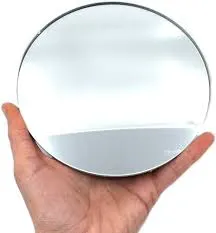

Understanding Mirror Glass Types A Guide to Options and Uses
Mirror glass is a versatile material that enhances aesthetics and functionality in various applications, from interior design to safety features in vehicles. Understanding the different types of mirror glass available can help consumers make informed choices based on their needs. This article explores the various types of mirror glass, their characteristics, and their typical applications.
1. *Flat Mirrors*
Flat mirrors are the most common type of mirror glass. They have a flat, reflective surface that produces an accurate reflection. Typically made from glass with a reflective coating applied to one side, flat mirrors can be found in homes, offices, and vehicles. Their simplicity makes them ideal for bathroom vanities, dressing rooms, and wall decorations. Flat mirrors are also essential in optical devices and scientific applications where precision is critical.
2. *Convex Mirrors*
Convex mirrors, or diverging mirrors, curve outward, providing a wider field of view than flat mirrors. The reflective surface of a convex mirror causes light rays to spread out, allowing users to see a broader perspective. This characteristic makes convex mirrors excellent for security applications, such as in parking lots and stores, as they can help monitor areas that would be hard to view with a flat mirror.
Additionally, convex mirrors are often used in vehicles as side-view mirrors to eliminate blind spots, improving safety for drivers and pedestrians alike. While they do distort the size of the objects seen in the mirror, this trade-off is acceptable considering the increased field of vision they provide.
Concave mirrors, or converging mirrors, have a curved, inward surface. This design allows them to focus light rays to a specific point, creating magnified images. Concave mirrors are widely used in applications such as shaving mirrors, makeup mirrors, and in optical devices like telescopes. The magnification feature enables detailed viewing, which is advantageous for personal grooming and scientific observation alike.
Despite their benefits, concave mirrors can produce distorted reflections, particularly when objects are positioned too close to the mirror. Therefore, understanding the appropriate distance when using these mirrors is crucial for optimal viewing.

4. *One-way Mirrors*
One-way mirrors, or two-way mirrors, are special types of mirror glass that allow light to pass through on one side while reflecting on the other. This unique property is due to a thin layer of reflective coating combined with transparency. One-way mirrors are often used in interrogation rooms, observation studios, and security applications, where visible observation is required without revealing the observer's presence.
While one-way mirrors are highly effective, it's essential to note that they rely on lighting differences. For example, if the light is brighter on the reflective side, the surface will appear as a mirror, and the observer may not be visible from the other side.
5. *Antique Mirrors*
Antique mirrors are characterized by their vintage appearance, often featuring a distressed look that adds elegance and charm to any space. These mirrors are made using traditional methods, which result in unique imperfections and character. They are popular choices for interior design, particularly in rustic or vintage-themed decors.
Antique mirrors can be used to enhance the aesthetic appeal of any room. They serve as stunning focal points above mantels, in hallways, or as part of gallery walls. While their reflective quality may not be as flawless as modern mirrors, their nostalgic charm can evoke warmth and a sense of history.
6. *Smart Mirrors*
In recent years, the advent of technology has given rise to smart mirrors, which integrate digital displays with traditional mirror functionality. These mirrors can show various information such as weather updates, time, and even fitness metrics. Smart mirrors are increasingly popular in modern homes, gyms, and beauty salons, where they contribute both to decor and tech-savvy engagement.
Conclusion
Choosing the right type of mirror glass depends on the intended use and desired aesthetic. Whether for practical applications, safety features, or decorative purposes, there are countless options available. By understanding the different types of mirror glass, consumers can select the best solution to meet their needs, enhancing their spaces and experiences with reflective beauty.